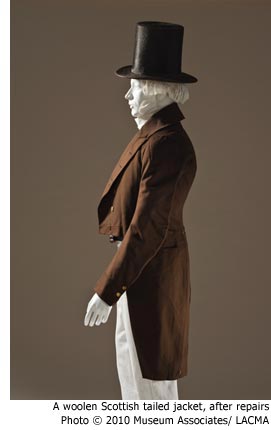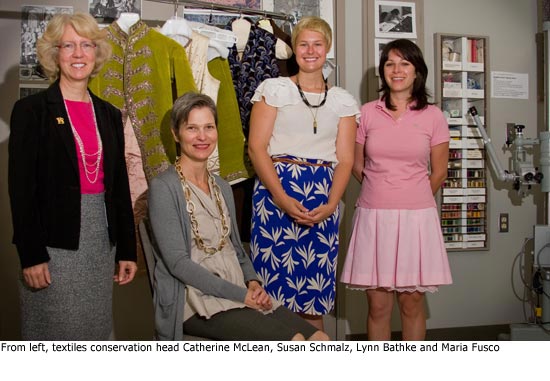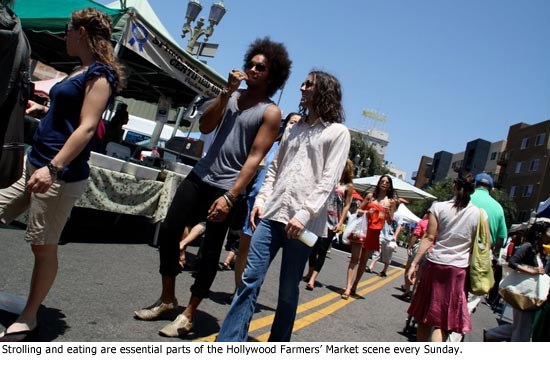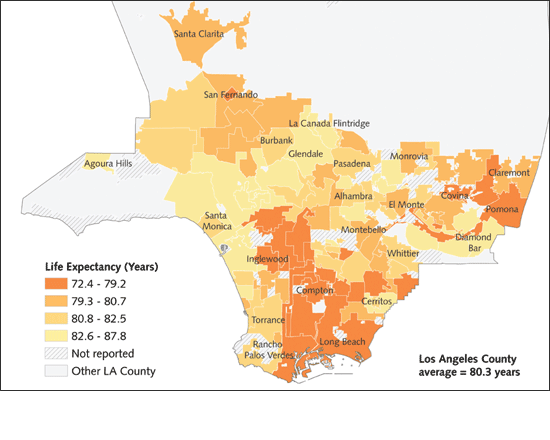Board set to fund emergency communications plan
July 29, 2010
 An ambitious plan to create a unified regional emergency communications network comes before the Board of Supervisors next week.
An ambitious plan to create a unified regional emergency communications network comes before the Board of Supervisors next week.
The system has a long name—the Los Angeles Regional Interoperable Communication System, or LA-RICS—and a crucial public safety mission.
Supervisors are set to approve a spending item authorizing an initial $17.7 million budget for the system’s first year of operation. Participants in the system include the county, the city of L.A., and 81 of the county’s other 87 cities.
The budget will be managed by the county and a Joint Powers Authority established last year to develop a stable, shared communications infrastructure supporting more than 34,000 first responders and associated personnel in the Los Angeles region. The proposed budget provides $7.761 million to cover staff positions, contracts, a lease agreement and administrative overhead, and $10 million for a cash advance for the hardware and software components.
In 2001, the nation witnessed the tragic and catastrophic result of interoperability failure when hundreds of first-responders to the 9/11 attacks on the twin towers of the World Trade Center found themselves unable to communicate internally among themselves and externally with other agencies. The 9-11 Commission Report specifically cited the New York Port Authority Police Department’s inability to communicate effectively as a key reason there was no overall coordination of a timely and effective response when the first plane struck the North Tower. The report also noted how the NYPD’s communications frequencies were simply overwhelmed after the collapse of the South Tower less than two hours after the initial attack.
Posted 7/29/10
Stitches in time for grand old gowns
July 29, 2010
There’s nothing like the prospect of a glamorous Los Angeles debut to make even the most luxurious wardrobe cry out for a little freshening up.
 Especially when the clothes are hundreds of years old.
Especially when the clothes are hundreds of years old.
When Catherine McLean, the head of textile conservation at LACMA, got the assignment to prepare about 250 ornate European dresses, gowns, suits and accessories for exhibition, the pressure was on.
Not only would it be a race against the clock to ready the garments for the upcoming “Fashioning Fashion: European Dress in Detail, 1700-1915.” McLean and her team also would have hands-on responsibility for spiffing up one of the museum’s hottest acquisitions in recent years—the multimillion dollar Kamer-Ruf collection, made up of more than 1,000 garments and accessories and named for the two European art dealers who assembled it.
Just landing the collection was a major coup.
“This really is a transformative acquisition,” says LACMA costume and textiles department curator Kaye Spilker, who curated the show with Sharon Takeda, the department head and senior curator. “I would think it puts us into the first tier of museum collections as regards the quality of the objects.”
The deadline wasn’t negotiable, either. The exhibition, which will explore the changing styles and techniques of fashions of the gentry and aristocracy, had to be ready for the October 2 grand opening of the new Renzo Piano-designed Resnick Pavilion.
That meant just two years for McLean and company to accomplish hundreds of tasks: refurbishing, stitching, cleaning and otherwise preparing for their close-ups hundreds of outfits that once were among the most glamorous in the Western world.
Work on the new collection was both inspiring and, occasionally, a source of “sheer terror” for McLean.
“We were pretty worried we wouldn’t be able to get it all done in time,” says McLean. “[But] the fact that this collection was so amazing was a real motivator. The pieces just light up the whole room.”
Facing the large job was McLean’s small crew. She and associate textiles curator Susan Schmalz are the only permanent staffers. They work with Maria Fusco, funded by a year-long Mellon Fellowship, and summer intern Lynn Bathke. Their base is a studio in LACMA’s Conservation Center, near specialists in paintings, three-dimensional objects, paper and scientific research.
A 30-year LACMA veteran, McLean found her vocation early. She got a volunteer job at a Detroit museum in high school where she enjoyed even the lowly task of removing linings from tapestries. “I was hooked,” she recalls, and after grad school came west to LACMA. She’s worked on modern clothing, pre-Columbian cloth and the museum’s famous Ardabil Carpet, once owned by J. Paul Getty.
 Textile conservation straddles a line between science and art. The conservators must know the chemistry of dyes and cleaning solvents as well as art history and the properties of dozens of fabrics. Deftness and patience are required for all the sewing, weaving and knitting involved.
Textile conservation straddles a line between science and art. The conservators must know the chemistry of dyes and cleaning solvents as well as art history and the properties of dozens of fabrics. Deftness and patience are required for all the sewing, weaving and knitting involved.
“The conservators do very exacting work under a lot of pressure,” says Spilker. “They are very good, and in their work they can’t make a mistake.”
The collection was in excellent condition. But time can damage a 200-year-old dress, no matter how well cared for.
First, they had to kill any potential pests by placing the items in freezers or oxygen-free nitrogen containers. Then they conducted a careful inventory, writing a detailed conditions report for every item in the show. They made the most complicated repairs first, saving the easiest for last.
Some highlights of their labors:
- A pink silk gown, from England, dating to 1830, had rips and tears thanks to its weighty decorations—architectural shoulders stuffed with horse hair and hundreds of faux pearls. Fusco re-stitched old repairs and mended new spots. She replaced the horse hair to repair the shoulders and added new glass pearls, though without using the original method of obtaining iridescent dye from fish scales. “We’re not trying to fool anybody” by exactly matching the originals, says Fusco.
- Silk stockings were a sexy item in 1700, but they tended to run back then, too. Schmalz is still working on repairing runs in a pair of silk knit women’s hose, embroidered with silvery birds and plants. (Curators found a similar stocking depicted in a scene in one of William Hogarth’s “A Rake’s Progress” paintings.) She’s making the repairs using tiny “insect pins,” a crocheting needle and a magnifying lens. “This is my most challenging piece,” says Schmalz, who once, on a free-lance assignment, helped restore an Elvis Presley jumpsuit.
- The team applied new techniques to old problems. A man’s tailed jacket from Scotland, dating from 1845, was pocked with a half dozen moth holes. Normal repairs leave a slight indentation, so Fusco borrowed a technique from home crafters called “needle felting.” Dying loose woolen fleece to the precise shade of brown, she took a square of spare cloth and jabbed the needle quickly up and down until there was a soft brown circle the size of the hole. The result: a near perfect match in color, texture and depth.
- “Fashioning Fashion’s” final piece, a black and gold silk ball gown purportedly worn by Queen Maria II of Portugal in about 1850, started life with a regal 12-foot train. But the train was trimmed in the 1890s, leaving the team struggling to understand how it was originally attached to the dress. So they sewed a piece of new cloth to restore the full length, and then experimented with several methods of pleating to attach the train to the bodice until they got the ideal fit. “Sometimes you have to improvise until it looks right,” says McLean.
After months of tense work juggling color coded charts of “to-do” items, the team is nearly done. By mid-August, mannequins with the clothing will begin to move into the Resnick Pavilion.
McLean is looking forward to viewing the show as a spectator, and says “there’s something magic about an exhibition.”
Even when you know the location of every secret stitch and fix.
Posted 7/29/10
Flash mob dance and food trucks, too
July 29, 2010
 They’re billing it as the Biggest Dance Ever, and if you’ve ever wanted to show off your moves in the Music Center Plaza, consider this your big chance.
They’re billing it as the Biggest Dance Ever, and if you’ve ever wanted to show off your moves in the Music Center Plaza, consider this your big chance.
In honor of National Dance Day, The Music Center and the Dizzy Feet Foundation are hosting this first-ever celebration in Los Angeles—which will include a flash mob dance assembled by the husband-and-wife choreographers and hip-hop innovators Tabitha and Napoleon D’umo.
The project is the brainchild of choreographer, producer and director Nigel Lythgoe (Pop Idol, American Idol, So You Think You Can Dance) to support dance education and physical fitness. It offers a variety of dance-themed activities, encouraging and inspiring people of all ages to give it a whirl in a variety of styles from hip-hop to ballroom.
The dance festivities are free as part of the Music Center’s Active Arts program. It all takes place on Saturday, July 31, from 10 a.m. to 12 p.m. on the Music Center Plaza downtown.
After a morning warm-up, the pace will pick up with director and SYTYCD judge Adam Shankman and the D’umos leading a big dance party and DJ jams. Meanwhile, participants can feast on a selection of goodies from some of the city’s favorite food trucks.
Posted 7/29/10
“The Summer of Love” at the Aero Theatre
July 28, 2010
 Better than a dip in the “Hot Tub Time Machine,” revisit your days of future passed this week when the American Cinematheque kicks out the jams with “Wild Things,” celebrating a slew of classic rock docs chronicling some legendary music festivals.
Better than a dip in the “Hot Tub Time Machine,” revisit your days of future passed this week when the American Cinematheque kicks out the jams with “Wild Things,” celebrating a slew of classic rock docs chronicling some legendary music festivals.
Tonight, Thursday July 29, the Rolling Stones are showcased in a double-bill including “Gimme Shelter,” the Maysles’ brothers account of the infamous Altamont Speedway concert, where the Stones hired the Hell’s Angels for concert security with predictably tragic and shocking results.
Things lighten up on Friday, July 30, with “Monterey Pop” (1968) documenting the first-ever rock festival, staged the previous June on the cusp of what became known as “the summer of love.” The staggering array of stars included Janis Joplin, Jimi Hendrix, Otis Redding, The Who and many more. It’s paired with “Wattstax,” the rarely screened 1973 film memorializing the 1972 concert at the Los Angeles Memorial Coliseum tagged as the “black Woodstock,” which featured many great Stax Records artists like Rufus & Carla Thomas, the Staple Singers, Albert King, and of course Isaac Hayes. The film also offers poignant scenes of the Watts community barely seven years after it was ravaged by the 1965 riots.
Saturday, July 31, “Woodstock” returns in the full-length director’s cut, featuring dozens of acts in a three day festival of peace, love and music that drew an estimated 500,000 fans despite mud, rain and miles of hiking.
Some say that if you can remember the ‘60s, you couldn’t have been there. Whether you can remember or not, the best of these films will take you right back there. The Aero Theatre is located at 1328 Montana Avenue (at 14th Street) in Santa Monica. Film calendar here, and buy your on-line tickets here.
Posted 7/28/10
The art of Metro posters
July 28, 2010
 You’ve seen them on the trains. Now check out Metro’s posters at the museum.
You’ve seen them on the trains. Now check out Metro’s posters at the museum.
Some of the transit agency’s Neighborhood Posters are a part of the “California Design Biennial 2010: Action/Reaction,” on tap now through October at the Pasadena Museum of California Art.
The Biennial, supported by the Los Angeles County Arts Commission, features the best examples of design over the past two years in five areas: industrial, fashion, architecture, transportation and graphic.
Metro’s art is featured in the graphic design category, as explained in this post about the posters at Metro’s blog, The Source.
The Neighborhood Posters series features work by 27 artists, each depicting a neighborhood or town served by Metro transit Created in recent years to boost Metro ridership in the many diverse communities, posters range from Alhambra and East L.A. to Venice, Van Nuys and Watts.
For an online sneak peek at all 27 posters, with biographies of the artists who created them, click here.
Posted 7/28/10
Local flavor blossoms at farmers’ markets
July 28, 2010
What’s fresh and green and fun all over? Farmers’ markets, of course—and the 3rd District is bursting with them. No longer just a place to find the makings for a locally-grown dinner, a thriving market is now a scene unto itself, complete with music, chatting, sampling, strolling and world-class people-watching.
Los Angeles is home to the largest concentration of certified farmers’ markets in the state, according to the county Agricultural Commissioner, which inspects the markets to ensure that all the produce is California-grown and being sold directly by the grower or grower’s representative. (That’s what makes it a “certified” market.) From the half-dozen certified markets that began in 1979, the county now boasts 124. Here’s a rundown on all of them, complete with times and locations. And if you’re inclined to explore the 31 markets located in our district, this list will get you started.
One of the biggest and best-known on anybody’s market list is the Hollywood Farmers’ Market, which comes to life every Sunday from 8 a.m. to 1 p.m. at Ivar and Selma avenues, just off Hollywood Boulevard. Serving a diverse clientele, the market is as much a celebration of community as a destination for gourmet locavores seeking out the finest in heirloom tomatoes or French green beans.
Photographer Tali Stolzenberg-Myers spent a recent Sunday at the market. This gallery offers a taste of what she found.
Photos by Tali Stolzenberg-Myers
Posted 7/28/10
Crisis looms for L.A. health care
July 27, 2010
 The Los Angeles County health care system needs some intensive care—STAT.
The Los Angeles County health care system needs some intensive care—STAT.
That was the message Thursday as officials sounded their most dire warning yet about the state of the deficit-plagued Department of Health Services. The county will have to drop hundreds of thousands of patients and significantly downsize its health care system unless some pending state and federal funding decisions break in its favor—a prospect that is looking less and less likely as Sacramento and Washington hunker down in contentious budget struggles of their own.
“This is a situation that’s increasingly looking like it’s in freefall without a parachute,” said Supervisor Zev Yaroslavsky, as the Department of Health Services looks to bridge a deficit of up to $429 million this fiscal year.
Of the 730,000 patients now treated each year, some 420,000—more than half—could be turned away, according to a motion by Supervisors Gloria Molina and Yaroslavsky. The cuts would seriously harm some of the sickest people in the county, and also would hamstring the county’s ability to transform itself to meet the demands of federal health care reform, the motion said.
Supervisors approved the motion, directing officials to provide a detailed worst-case analysis in 15 days, after budget updates from the health department and Chief Executive Office provided only a general overview of what will happen if federal and state funding relief does not come through.
The reports did not mention closing hospitals or other health facilities. But the discussion during the meeting made it clear that those actions and others may be on the horizon soon.
“What facilities are going to close? What kinds of facilities are going to close?” Yaroslavsky asked CEO William T Fujioka and Health Services interim director John F. Schunhoff.
The county is looking at three possible ways out of its predicament. There will still be a big deficit to confront, however, even if all three come through.
One hope is to obtain from Congress an extension of the “enhanced FMAP Medicaid matching rate” that would provide some $33.8 million. (FMAP stands for Federal Medical Assistance Percentages.) The measure was not included in the recent vote to extend jobless benefits, however, and it is unclear whether it will be reintroduced in another form.
Another option involves obtaining a favorable decision on the hospital provider fee the county would receive from the Centers for Medicare and Medicaid Services (CMS.)That could mean $115 million in fiscal 2010-11.
Finally, county officials have been hoping for an additional $150 million from the so-called “1115 Waiver,” which would provide support to public hospitals that treat needy patients. (1115 refers to a section of the Social Security Act that deals with how Medicaid services are provided in states.)
But those funds could end up being siphoned off by the state of California, which previously had been seen as an ally in negotiating with CMS for the waiver.
“The state’s key interest is helping to solve their budget problem for [fiscal year] 10-11,” Schunhoff told the board.
Molina, the board chair, said it is unrealistic to count on the three options coming through.
“I think we’re being overly optimistic because we haven’t solved last year’s deficit,” she said.
Yaroslavsky noted that the situation is growing worse as the health department continues to spend—with no deficit solution in sight—in the new fiscal year.
“We’re in a very serious situation,” Yaroslavsky said. “We now have 11/12ths of the fiscal year remaining, and we are still spending as if assumptions [of new revenue] are going to come to pass.”
“The longer we wait, the deeper the cuts are going to be,” said Supervisor Michael D. Antonovich.
Supervisor Don Knabe asked the CEO and Health Services chief not to simply propose shutting specific facilities, but to spread the pain throughout the county health system.
And Supervisor Mark Ridley-Thomas asked that the report include information on county departments, such as the sheriff and probation, that receive unreimbursed health department services.
Underscoring the discussion was the reality that officials here will have to work through the looming crisis, with or without outside help.
“Should the federal and state governments fail to help Los Angeles County obtain essential revenue streams…then this board must be prepared to implement these cuts,” the Molina-Yaroslavsky motion said.
Posted 7/27/10
Death by ZIP code
July 27, 2010
Nestled against the mountains, at the foot of Angeles Crest Highway, is La Canada Flintridge, one of the region’s wealthiest enclaves, a place where the residents not only prosper but live long.
According to a provocative new report by L.A. County’s Department of Public Health, La Canada Flintridge residents have an estimated life expectancy of 87.8 years—longer than anywhere else in the county.
Then there’s Westmont, a community in the challenging flatlands of South Los Angeles, where incomes are low, crime is high and drop out rates are through the roof. There, public health officials estimate that life expectancy is the worst in the county—72.4 years. Put another way, Westmont residents might live an average of 15 fewer years than the residents of La Canada Flintridge.
This stunning disparity is the central point of the Public Health Department’s most recent community-by-community exploration of how socio-economic factors are influencing our health and mortality.
“It’s a tall mountain to climb,” Public Health Director Dr. Jonathan Fielding said of the problems eroding life expectancy in dozens of communities. “But you climb a mountain one step at a time.”
Last month, the department released a detailed report on smoking rates throughout the county.
Its latest report—“Life Expectancy in Los Angeles County: How long do we live and why?”—ranks life expectancy in more than 100 local cities and communities with populations larger than 15,000. To bring deeper meaning to those numbers, the report also ranks these same places through an “economic hardship index,” a measure that includes such factors as poverty, unemployment, education and housing.
In an introduction to the report, Fielding called the results “sobering,” saying that they show “reduced life expectancy is strongly related to community-level economic conditions.”
“Poorer neighborhoods,” the report explains, “may have fewer large grocery stores, resulting in less access to fresh, nutritious and affordable fruits and vegetables, and may have fewer outdoor recreation areas and safe places where children and families can play.”
Fielding and his staff caution that the correlations between life expectancy and economic hardships are based on statistical assumptions, the availability of records and the size of the population pools. For example, the community of Lennox ranks among the highest in life expectancy but, conversely, ranks among the worst in social problems.
Beyond neighborhood rankings, the study also examines the widely varying life expectancy rates between races and genders, including this extreme example: an Asian/Pacific Islander female is expected to live 18 years longer than a black male (86.9 vs. 69.4).
Despite the troubling disparities between communities and individuals, Fielding noted that, in the bigger picture, the news is good because life expectancy has risen nearly five years since 1991. “That’s amazing,” he said. “We’ve made enormous progress.” The countywide average is now 80.3 years, according to the report
At its heart, the life expectancy study is a call to action by the Public Health Department. It recommends a number of strategies to begin closing the longevity gap, ranging from providing more recreational opportunities, to fostering more social connections, to increasing public safety and limiting access to alcohol and drugs.
Here’s a list of the Top 10 communities with the longest and shortest life expectancy. To see how your community ranks, click here.
Posted 7/27/10
Rattling those shady pots & pans sales
July 22, 2010
It was time to blow the lid off the scam.
After receiving numerous complaints, investigators with the county’s Department of Consumer Affairs decided to go undercover to prove that agents of a direct-sales cookware company were making outlandish claims about their expensive pots and pans. Among those claims: that the company’s cookware could help prevent cancer, diabetes and Alzheimer’s.
Posing as potential customers, the investigators secretly videotaped agents for Rena Ware International Inc. employing high-pressure scare tactics, claiming that people might get sick unless they bought kitchenware sets costing from $1,000 to $4,000.
“The saddest thing is that the customers were mostly low income people, and many of them took on huge debt,” said Rigo Reyes, the department’s acting director who took part in the undercover operation.
The Rena Ware investigation, conducted with the state’s attorney general and the Los Angeles County district attorney, led to a civil suit against the company that was settled earlier this month. The Redmond, Wash.-based company admitted no wrongdoing but agreed to pay $625,000 in penalties, costs and fees, including $250,000 in consumer refunds and $100,000 to hire an independent monitor for a year.
“Their illegal high pressure sales tactics preyed on the fears of vulnerable Californians,” Attorney General Jerry Brown, the Democratic candidate for governor, said in a statement.
In a statement after the settlement was announced, Rena Ware said it had cooperated fully with the investigation and promised to “remain vigilant against fraudulent and unethical sales tactics.”
The undercover job was one of a half-dozen that Consumer Affairs investigators undertake each year, usually targeting auto dealerships or immigration consultants. More often, the department’s 15 investigators attempt to resolve consumer complaints about landlords, small businesses, real estate-related scams, identity theft and elder abuse. They sometimes refer cases to the Los Angeles city attorney, the district attorney or, when they include complaints from other counties, the attorney general.
Rena Ware International, a privately-held direct sales firm, sells cookware and water purifiers in the U.S., Europe, Asia and Latin America through an independent sales force it trains and supplies. In California, where the company is popular in the Latino community, the undercover meetings were conducted in a mix of English and Spanish.
“Consumer Affairs’ work was critical in this case,” said Michele Van Gelderen, the state deputy attorney general who prosecuted the case. “Their investigation obtained first-hand evidence of the wrongdoing, coupled with extensive consumer interviews that showed the practices were widespread.”
The Rena Ware investigation started in mid 2008, after an executive in a rival company, which was being investigated by Consumer Affairs, complained that his firm was being unfairly targeted.
“He said there were companies that were worse than his, and I asked which one,” Reyes recalled. “He said Rena Ware.”
In response, Consumer Affairs re-interviewed people who had complained about Rena Ware in recent years and were told that the company’s agents scared consumers into thinking that other companies’ pots and pans were full of dangerous contaminants. For example, the sales people allegedly claimed that Teflon coatings were made of recycled tires and could cause cancer.
The sales force claimed that Rena Ware’s stainless steel cookware helped ward off diseases because it was made of “the same material doctors used to perform surgery,” Reyes said. They also contended that the pans could remove harmful hormones from chicken.
Reyes’ undercover team set up meetings in July 2008 with three Rena Ware sales teams to find out whether such unproven claims were widespread.
“Companies always say the sales people are independent and it has no control over them,” Reyes explained. “We wanted to show that it’s a company problem.”
Using an investigator’s home in Maywood, Reyes and investigator Maggie Becerra pretended to be husband and wife while other investigators played the roles of friends or relatives. Hidden cameras recorded the action.
The meeting sequences were remarkably similar. The Rena Ware sales teams, often husbands and wives, always conducted a “demonstration” by preparing a meal that quickly turned into a sales pitch.
At the first meeting, Reyes and Becerra agreed to pay $2,136 for cookware and a countertop electric stove, supposedly for Becerra’s diabetic mother. At a meeting with another sales team, Reyes bought a 17 piece set for $2,238, ostensibly for his elderly grandmother.
At the first meeting, Reyes and Becerra repeatedly asked about the company’s interest rates.
“They kept saying it was 2%,” Reyes recalls, but failed to say that figure actually was the monthly rate. The annual rate was a steep 21.5%, adding hundreds of dollars to the purchase price.
During the second meeting, the sales woman offered to help Reyes obtain illegal identification after he said he wouldn’t qualify for Rena financing because he was in the U.S. illegally.
According to Reyes, the saleswoman first suggested that he could use a friend or relative’s social security number. When he declined, “she said she could take me to a place in L.A. where I could buy a whole package of false ID,” recalled Reyes, who declined that offer, too. Investigators concluded that identify-fraud proposal was the woman’s own idea and not company-wide practice.
Reyes said that he understands how powerful the appeal to health and family can be; he said his own uncle bought Rena Ware some years back. But, he said, consumers need to be more skeptical.
“If some guy says this will cure cancer, that it’s a miracle pot, you can’t just believe it,” Reyes said. “Consumers need to learn how to say no.”
Posted 7/22/10

































 Check for the latest closure information
Check for the latest closure information








